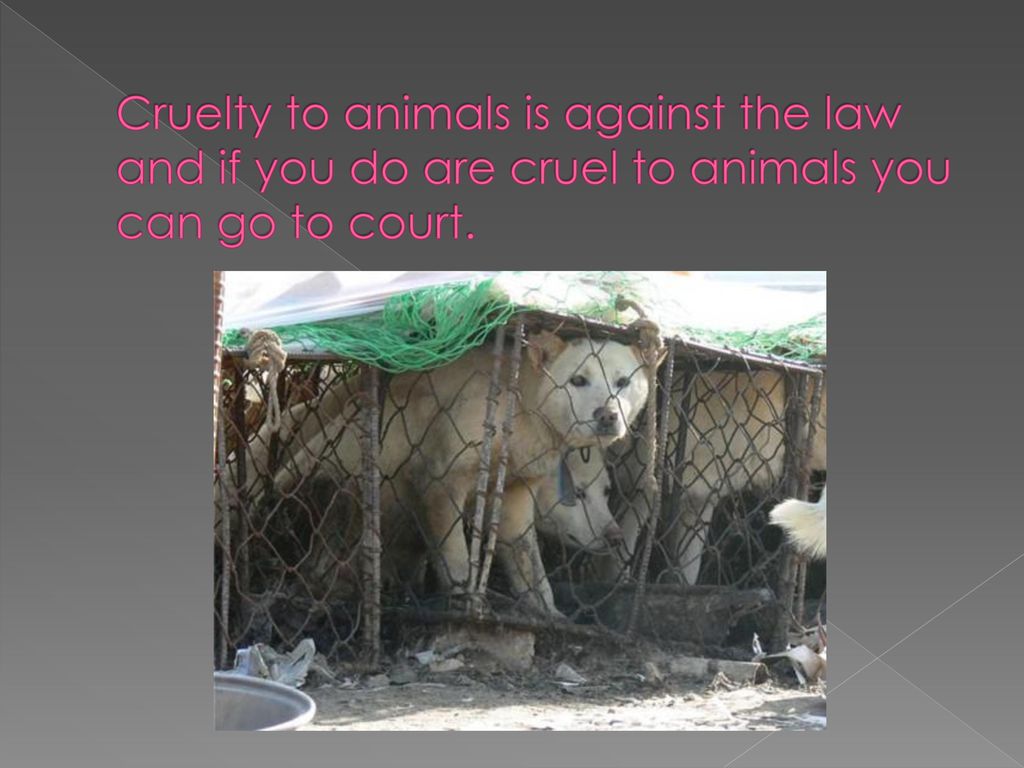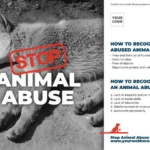In contemporary society, the conversation around animal cruelty often meanders through complex pathways of ethics, personal beliefs, and legal realities. This multi-faceted issue posits a foundational query: Is cruelty to animals primarily a social cause or a legal concern? Unfortunately, cruelty toward animals manifests in numerous ways, from neglect and abuse within domestic environments to exploitation within industrial systems. Understanding this subject requires dissection into both its societal implications and its legal framework.
At the crux of this discussion lies the concept of animal rights as a burgeoning social cause. Over the past several decades, a palpable shift in public consciousness regarding animal welfare has emerged. Activism has proliferated in various spheres—ranging from grassroots movements advocating for the humane treatment of pets to international campaigns targeting the horrific conditions of factory-farmed animals. As a society, the moral obligation toward sentient beings has gained traction, prompting individuals to act against perceived injustices. This evolving mindset beckons curiosity regarding the societal responsibility to protect animals and ensures a quality of life that aligns with ethical standards.
The term “social cause” suggests a collective movement driven by communal concerns and activism. Within this context, animal cruelty is inexorably linked to broader discussions about compassion, responsibility, and the value of non-human life. Cultural narratives shape perceptions, leading to a range of societal responses. In many cultures, animals are revered as companions, while in others, they may be viewed solely as commodities. These perspectives influence how actions toward animals are interpreted and the social pressure exerted on individuals engaging in or witnessing cruelty.
Critically engaging with this topic invokes the examination of social norms. Numerous studies indicate that communities fostering higher levels of empathy and kindness towards animals often experience lower incidences of violence and crime. Many advocates posit that teaching compassion towards animals can catalyze empathy in interpersonal human relationships, ultimately nurturing a more harmonious society. Therefore, addressing animal cruelty can transcend the immediate realm of legal action—it becomes an emblematic part of a larger sociocultural conversation about ethics and behavior.
However, focusing solely on the social aspects may unintentionally downplay the essential role of the law in curtailing animal cruelty. Legal frameworks established to protect animals are integral to deterring abuse and providing recourse for victims of cruelty. Anti-cruelty laws vary significantly from one jurisdiction to another, affecting how cases are prosecuted and the penalties imposed on offenders. In jurisdictions with more stringent laws, a significant reduction in animal abuse incidents has been noted, underscoring the inevitability of legal advocacy in any conversation about animal welfare.
The statutes that exist serve as both a sword and a shield; they protect animals from harm while also holding perpetrators accountable. The amelioration of animal protection laws requires tireless advocacy and vigilance, as loopholes or insufficient regulations can permit cruelty to persist. This is evident when examining specific industries notorious for abuses, such as puppy mills or the meat production sector, where legal guidelines are often less stringent or poorly enforced.
While the legal system aims to provide a framework for justice, it is commonly recognized that enforcement is only as powerful as societal will permits. Prosecutors often face the daunting task of navigating cases involving animal cruelty amid a backdrop of societal indifference or, in some cases, tacit approval of harmful practices. Thus, the intertwining of social attitudes and legal statutes becomes ever more evident.
Furthermore, the dichotomy of social cause versus legal concern invites exploration into the consequences of neglecting one aspect over the other. For example, when society fails to impose legal accountability, it emerges as tacit acceptance of cruelty, deterring social advancement regarding animal rights. Conversely, a purely legalistic approach devoid of understanding societal foundations may lead to inadequate enforcement and ineffective advocacy, preventing substantive change.
The necessity for a balanced approach to animal cruelty advocacy is apparent. Effective campaigns should encapsulate both the legal and social dimensions, thereby creating a robust framework that fosters long-lasting change. Educational initiatives aimed at raising awareness about animal suffering can dovetail with legislative measures that ensure stringent protections. In this manner, activists have the opportunity to catalyze a broader societal transformation while concurrently demanding and ensuring justice through appropriate legal means.
As society grapples with this profound issue, novel avenues for exploration arise. Engaging with the public through digital platforms allows for heightened visibility of animal welfare concerns and ignites discussions about shaping legislative action. Multimedia campaigns can poignantly articulate the visceral impact of animal cruelty, transforming individual outrage into collective activism. This is an opportunity for communities to unite in purpose, utilizing social media’s expansive reach to advocate for stringent laws and the ethical treatment of animals.
Ultimately, the inquiry of whether animal cruelty is a social cause or legal concern does not lend itself to a binary answer. It is neither exclusively a moral issue nor solely a matter for the courts; rather, it requires the confluence of legal frameworks, societal understanding, and cultural shifts. In nurturing dialogue and action on this issue, society can advance toward a future that recognizes the intrinsic value of all living beings, thereby reducing both social and legal injustices in tandem. As advocates push for change, it is imperative to remember that the fight against animal cruelty is a shared battle, unifying progressive legal standards with the evolving moral fabric of society.









